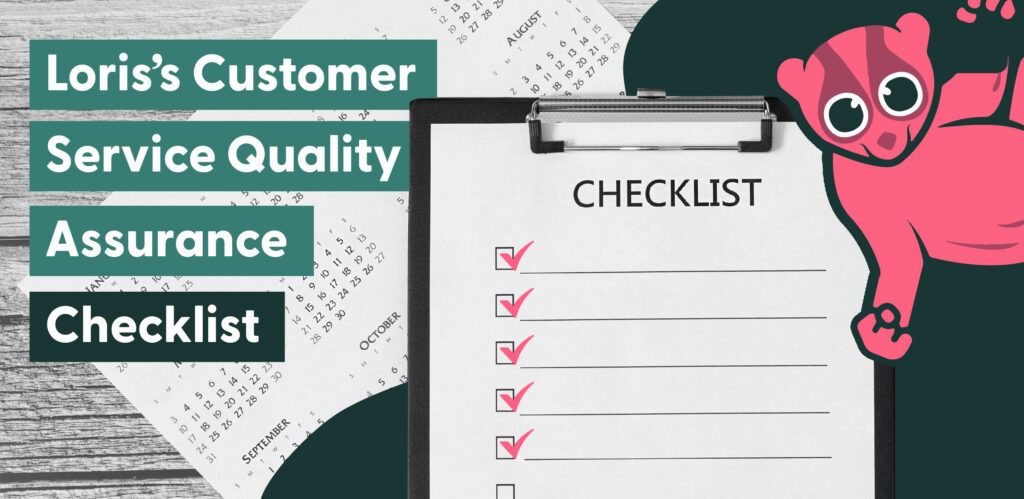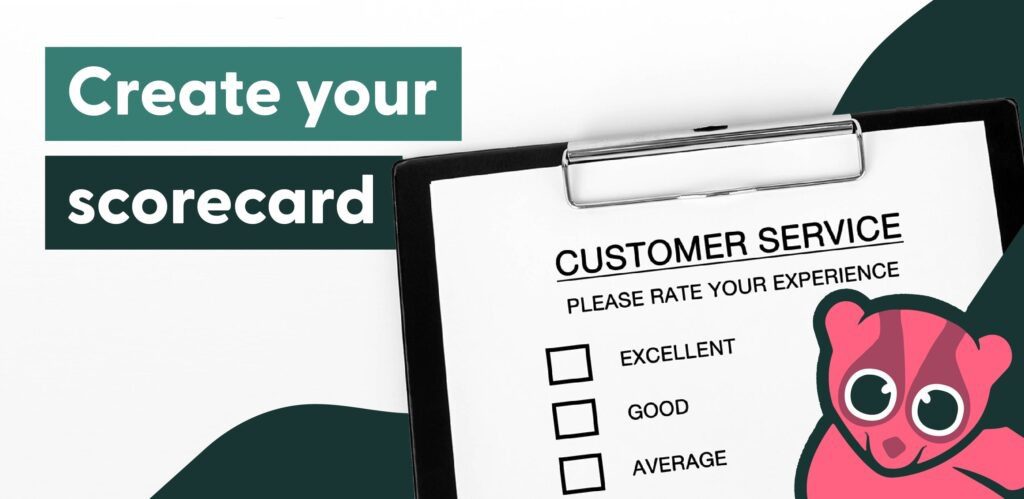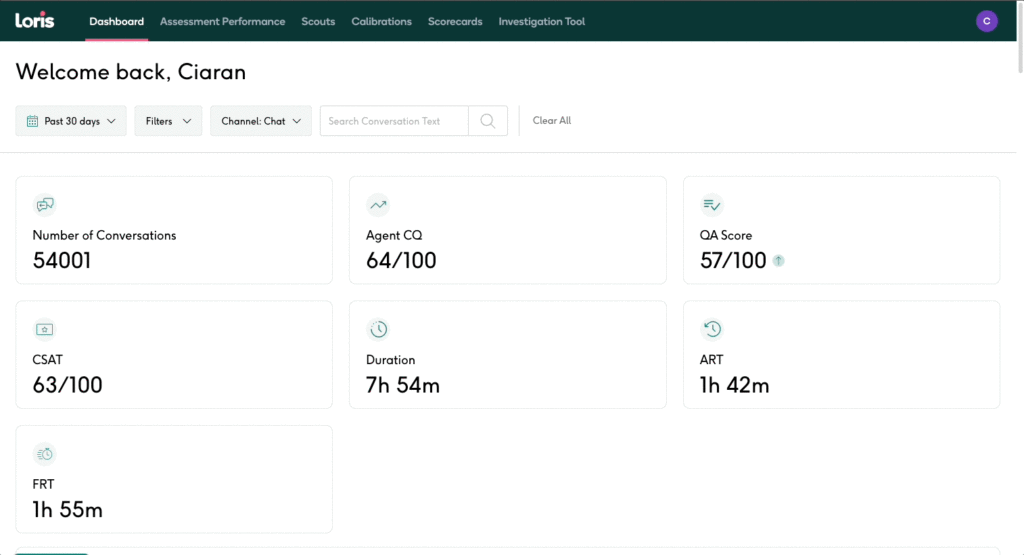
Is your call center experiencing high levels of dropped calls or poor satisfaction scores from customers?
If so, it might be time to consider implementing a customer service quality assurance (QA) program.
In our experience, implementing an effective QA program using modern AI tools will help boost customer satisfaction scores (CSAT) by around a third.
If you want to achieve similar results, then you’ve come to the right place. This article provides a checklist to get your customer service QA program up and running.
Our customer service quality assurance checklist features five steps:
✅ Hire a QA Analyst
✅ Decide what ‘good’ looks like for your company
✅ Create your scorecard
✅ Get the right software
✅ Make improvements
We explain each step in greater detail later in the article.
Like what you’re reading? Get the latest news and product updates delivered to you in our newsletter.
What Is Customer Service Quality Assurance?

Before we get to the checklist, let’s define what we mean by customer service QA and why it is important.
Customer service QA is an ongoing program made up of people, processes, and technology. It regularly measures and improves the way your customer service team interacts with customers.
It involves:
- Setting clear expectations for your agents and customer service reps.
- Monitoring calls to measure whether they meet these expectations.
- Using call data to identify areas of improvement.
🎓Loris expert opinion
“Investing in QA ensures your customer service team meets standards and operates efficiently. Most importantly, it gives you detailed data from across your call center, allowing you to make more informed decisions.”
– Eugene Mandel, Head of AI at Loris
Loris’s Customer Service Quality Assurance Checklist

We work with customer service teams at leading brands worldwide, helping them to automate their QA processes.
We’ve achieved incredible results—on average, we help businesses increase customer satisfaction (CSAT) by around 33% while also speeding up their QA process 5x.
This achievement has led us to the development of our QA checklist that delivers consistently excellent results. By following the steps below, you can set up an industry-leading automated QA program.
👋 Hi! We’re Loris
Loris.ai offers a technology platform that optimizes customer service interactions based on:
🚀 Understanding conversational trends
🚀 Automating quality assurance (QA)
🚀 Optimizing real-time interaction guidance
By analyzing customer service interactions with advanced artificial intelligence, Loris.ai identifies trends and areas needing improvement, ensuring every conversation meets your company’s high standards for customer service.
Beyond QA, the platform empowers customer service agents with immediate advice when handling live conversations, as well as tailoring responses based on customer sentiment and established best practices.
This combined approach elevates agent performance, improves customer satisfaction, and makes customer service levels consistent across your team. It ensures every agent provides excellent customer service.
✅ Hire a QA analyst

To begin with, you’ll need someone to roll out, lead, and manage your QA processes and programs, such as a dedicated QA specialist who can manage and analyze the data and insights generated during the QA process.
They’ll then use this information to recommend training programs to call center managers and agent team leads. They can also suggest improvements to the company’s products, processes, and policies based on recurring topics highlighted within your QA platform.
🎓Loris expert opinion
“A great QA analyst can transform your contact center—but only if they have the right tools. They need software to collect data and generate insights at scale.”
– Eugene Mandel, Head of AI at Loris
✅ Decide what ‘good’ looks like for your company

You can’t measure the quality of customer service interactions without properly defining what ‘good’ means for you.
This involves identifying what matters to your company; this, for example, could include:
- Satisfying customers
- Working efficiently
- Following the correct procedures
The customer service criteria we recommend you use are:
✔️ Conversation management
✔️ Product knowledge
✔️ Policy adherence and compliance
✔️ Follow-up procedures
✔️ Customer satisfaction score
Once you have listed these criteria, identify the agent behaviors that will help optimize them.
For example, agent behaviors for good conversation management might include:
- Provide straightforward information to customers
- Confirm understanding by summarizing the customer’s points
- Don’t interrupt the customer
- Use a tone that shows understanding and concern for the customer
✅ Create your scorecard
A QA scorecard is a collection of questions that help you understand how well your call center agents handle customer interactions.
It helps quantify performance and identify areas that need improvement in a way that’s consistent, fair, and informative to agents as well as their managers.
For each customer service criteria, you need to create a scoring system that enables you to measure the quality of interactions.
Examples of scoring systems include:
- A scale—for example, a score of 1–5.
- A percentage.
- Binary; in other words, yes/no.
- A rating—for example, good, average, or bad.
Once you have a scoring system, consider what standard you expect your agents to achieve. For example, you might give agents a score out of 5 for conversation management.
You may decide to set your standard at a 4. A 5 would indicate that someone has exceeded expectations.
🎓Loris expert opinion
“For scorecard items that are absolutely critical, you may want a binary ‘yes/no.’ Many organizations decide that if a critical requirement isn’t met—for example, ‘not using profanity with customers,’ the agent will automatically fail their scorecard.”
– Eugene Mandel, Head of AI at Loris
Collate your scorecard
Now you have the three elements of your scorecard:
✔️ Criteria that matter to your business
✔️ Agent behaviors that lead to those criteria being optimized
✔️ A scoring system that measures agent behaviors
You can see how this might look in the table below.
Alternatively, request a customer service scorecard template with everything you need to get started. Check out our article on how to create a customer service scorecard to learn more.
Criteria | Behaviors | Score |
|---|---|---|
Conversation management | Provide straightforward information to customers. Confirm understanding by summarizing the customer’s points. Don’t interrupt the customer. Use a tone that shows understanding and concern for the customer. Correct spelling, grammar, and punctuation. | Scoring system: Points out of five. Chosen minimum standard: 4/5 |
Product knowledge | Answer customer questions related to the product without needing to refer to someone else. Correct use of product names, technical terms, etc. | Scoring system: Percentage Chosen minimum standard: 95% compliance |
Policy adherence and compliance | Comply with company policies. | Scoring system: Percentage Chosen minimum standard: 95% compliance |
Follow-up procedures | Resolve escalated issues within 48 hours. | Scoring system: Percentage Chosen minimum standard: 80% compliance |
Customer satisfaction score | Aim for an 80% CSAT score. | Scoring system: Points out of five. Chosen minimum standard: 4/5 |
🎓Loris expert opinion: Good customer service looks the same for most industries
“In our experience, certain principles of delivering exceptional customer service are universally applicable, regardless of industry.
Based on this, we’ve created a scorecard that businesses can use as a reliable starter template. It only needs slight modifications to fit your business.
Read our customer service QA scorecard article to learn more.”
– Eugene Mandel, Head of AI at Loris
✅ Get the right software
Next, it’s time to implement your scorecard and start collecting tons of useful data.
In the past, quality assurance was a manual process. It involved call center managers trying to draw customer service performance insights from a handful of conversations.
They could not scale this across their entire team—as it involved managing a staggering quantity of data manually.
This was hugely time-consuming and meant that agent performance was being assessed based on 2–5% of their conversations, not their total performance.
In turn, the insights gleaned were not accurate; so, the training and development programs that these insights informed were not as effective as they could be.
Today, AI-powered QA platforms (like Loris!) enable you to automatically collect and analyze data from thousands of customer conversations across your customer service operations.
They allow you to deal with customer service issues in real time and provide immediate feedback to reps after calls.
Look for an AI-powered QA platform, like Loris, with the ability to:
✔️ Automatically convert customer interactions across all channels into measurable data.
✔️ Analyze customer interactions for factors like sentiment, customer intent, and conversation quality.
✔️ Score each interaction based on what matters to your organization.
✔️ Generate on-demand coaching for reps.
✔️ Analyze large datasets to surface common customer service issues.
✔️ Suggest improvements to your QA scorecard and team workloads.
✅ Make improvements

You can use the insights from your QA program to make improvements in two key areas:
🎓Loris expert opinion
“Carrying out QA is pointless if the findings aren’t fed into agent training programs. It’s critical that your QA analyst works closely with the person responsible for training your customer service team.”
– Eugene Mandel, Head of AI at Loris
✔️ Develop training programs
Platforms like Loris can be used to generate feedback on each agent’s performance, as well as that of the overall team.
This allows you to create personalized training as well as broad programs that address common issues across your team.
You can also use our interaction monitoring to determine how well individual agents implement their training.
✔️ Improve your products and policies
The best way to solve customer issues is to make sure they don’t need to contact you in the first place.
Let’s say lots of customers contact you and complain about your returns policy. You could train your agents to deal with this kind of call, but a better approach could be to change your returns policy.
Equally, if you’re getting loads of calls regarding certain aspects of your product, then it probably needs improvement.
Simplify Your Customer Service Quality Assurance with Loris
Achieving high-quality customer service won’t happen overnight. But with the right programs and processes in place, you can better understand customer needs and your agents’ performance.
The effectiveness of any QA program, however, will be limited if you don’t have good technology.
Platforms like Loris can help you collect and manage huge datasets, and quickly draw useful insights.
This means you spend less time juggling spreadsheets and crunching numbers, and more time training reps, improving products, and boosting CSAT.
Ready to elevate your customer service quality and ensure every interaction counts? Take the first step toward transforming your customer service experience with Loris.
Discover how AI can ensure your team not only meets but exceeds customer expectations. Don’t let another customer slip through the cracks. Get in touch today speak to an expert.


